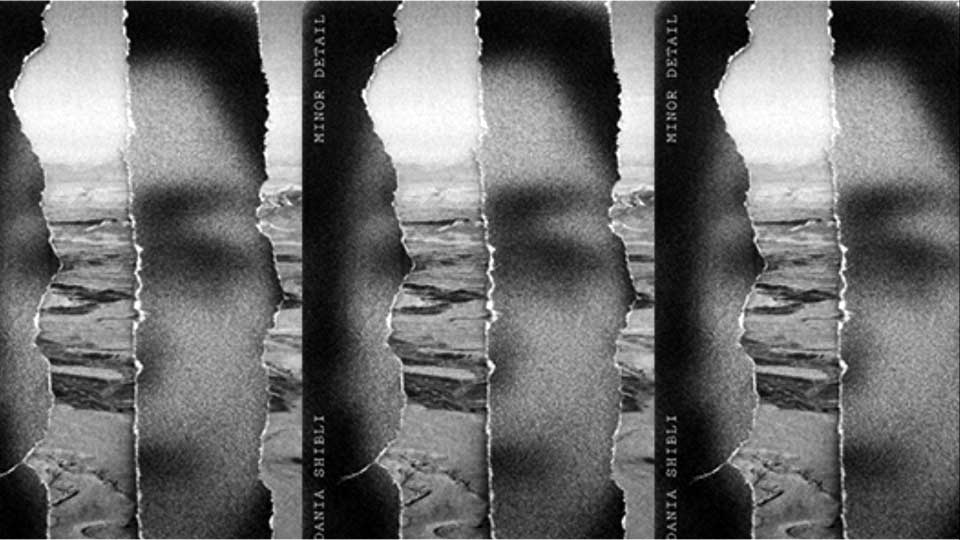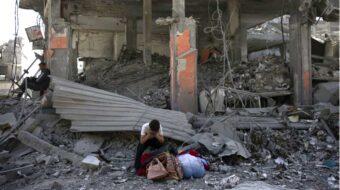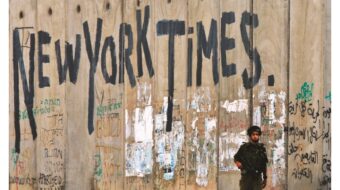
It is based on a true story. In August 1949, a small Israeli army outpost near the Egyptian border was assigned to hunt down and “cleanse” the area of operation of the “remaining Arabs” or “infiltrators” in the aftermath of the 1948 war with Egypt. During a patrol, as reported by Haaretz in 2003, several of the soldiers encountered an unarmed group of Bedouins, nomadic Palestinian Arabs who lived in the Naqab desert and were accustomed to frequently crossing the Egypt-Israeli border. During the encounter, the soldiers murdered each member of the group, leaving only a girl, believed to be between the ages of 10 and 15, alive. They kidnapped the girl and returned with her to the outpost. They “gang raped” her, murdered her, and buried her body in the desert near a well-known historic called Nirim, an Israeli settlement, that still stands.

Palestinian author Adania Shibli’s novel Minor Details dealing with this crime is divided into two main symmetrical parts separated by at least two generations. Those parts are connected by the fact that the unnamed woman protagonist who attempts to investigate the 1949 “incident” happened to have been born on the same day (25 years later) on which the crime took place. She initially learns about it from reading the papers, but it is the “minor detail” about the date that snaps the events into a frame of recognition that turns into her obsession.
Indeed, much about this novel—war, Israeli bombings of West Bank neighborhoods, Israeli soldiers randomly demanding the identity papers of Palestinian residents, shootings of Palestinians, “the [apartheid] Wall,” the system of identification cards meant to control the movements of Palestinians, shortages of basic resources like food and water for Palestinian areas—in other words, the violence of the occupation as a totalizing force—has come to seem ordinary.
Shibli’s narrative reproduces this ordinariness, the bland everyday routine of military occupation on each page. The unnamed Israeli officer, who orders the killings and initiates the rape of the child, carries out his tasks with such mundane exactness: preparing his quarters, overseeing the reconstruction of the fortifications of the outpost, conducting patrols of the area, washing himself, preparing meals, and so on. The painstaking description of such activities over the four days of the first half of the novel nearly obscures the vicious crimes from which the story unfolds. A reader may be startled to discover how easily they become complicit, like the soldiers who seem to be watching a “scene unfold before them” as if they are simply passive observers rather than participants in and architects of such a monstrous crime.
The fact of the crime isn’t in doubt; it is a matter of historical fact. But once the “minor detail” has riveted the woman’s attention and obsession, she decides to investigate further because she wants to find a way to tell the murdered girl’s story. We never learn why she wants to do this or how she plans to do this. We don’t know her real occupation, except that she works in an office in the historical West Bank administrative city of Ramallah. Despite its political and cultural status as the capital of the Palestinian territories, Israeli military forces control entrances and exits and frequently run military operations in it. All we know is that the protagonist is both driven to find the truth and anxious and fearful of moving outside the comfort zone of the carefully guarded borders of Ramallah to conduct her dangerous search for the full story.
Her first step is to reach out to the unnamed Israeli journalist who first reported the “incident.” That journalist refuses to help other than to say she can access all the information used for the story in the Israeli military museum’s archives in Tel Aviv-Yafa, on the western coast of the country. When she inquires if a Palestinian would be able to access those archives, the journalist says that he saw no reason why not. During her journey outside of Ramallah, we discover quickly what the journalist doesn’t seem to want to discuss or pretends not to know. The border control networks of permanent and flying checkpoints, the (complex of) Wall(s), and identification systems controlled by the Israeli army are specifically designed to deny Palestinians free movement outside of the West Bank, into Israel, and most certainly not between Gaza and the West Bank. It is the denial of free movement that has earned the Israeli occupation of Palestinian territories the designation as an apartheid regime by numerous human rights organizations. Thus, her journey to discover the truth is fraught with dangers the Israeli journalist refuses to acknowledge.
For her perilous journey, the woman brings along a bunch of maps, including an official Israeli tourist map printed by the government, a map of Palestine as it was up to 1948, and a map created by researchers that shows some of the permanent checkpoints she would encounter on the trip. During the drive, she moves back and forth among the maps discovering that a long list of Palestinian villages she should have driven through have been completely eradicated. Many were towns she had never heard of, but many were villages and places she had been to as a youth. Today, they are gone. In their place, a vast park, called Canada Park, serves as an attraction that draws some 300,000 Israeli tourists annually for pleasure and vacation.
I will leave it to the reader to discover what our heroine learns on her journey. Suffice it to say this dense, emotional novel makes superb reading. It has earned numerous honors, including the Germany-based LiBeraturpreis, which aims to celebrate the “cultural wealth” of countries of the Global South. While the managers of the prize made a desperate error in delaying the celebration of Shibli’s literary landmark last month due to pressure from a journalist who seemed to claim that truth-telling about atrocities by Israeli military forces is “anti-Semitic,” Shibli’s literary success with this novel deserves a wide readership.
Minor Detail
By Adania Shibli
Translated by Elisabeth Jaquette
New York: New Directions Publishing, 2020












Comments